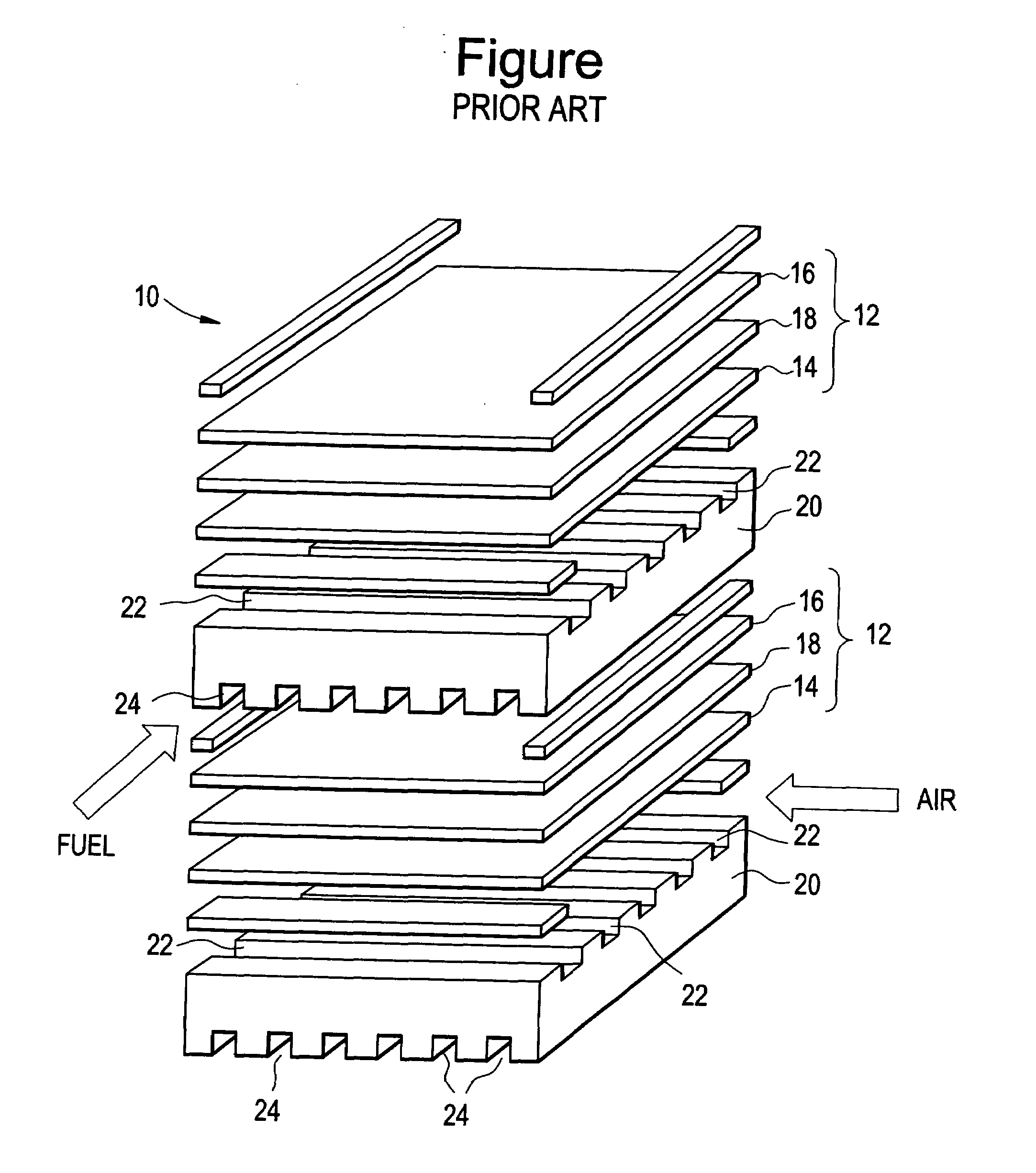Ferritic steels for solid oxide fuel cells and other high temperature applications
a technology of ferritic steel and fuel cells, applied in the direction of cell components, cell component details, electrochemical generators, etc., can solve the problems of poor formability, insufficient strength, delamination, etc., and achieve the effect of improving the strength of the cell, improving the service life and improving the service li
- Summary
- Abstract
- Description
- Claims
- Application Information
AI Technical Summary
Benefits of technology
Problems solved by technology
Method used
Image
Examples
examples
[0020]In this example, four steel compositions were cast followed by sheet forming. Table 1 provides the chemical composition expressed in atom percent with the balance being Fe. The alloy compositions were exposed for 1500 hours in air at 850 C using a lanthanum strontium manganite paste for the cathode. Actual oxide thickness after this exposure is provided in Table 2. Also included is the theoretical oxide growth after 40,000 hours at 850° C. assuming parabolic growth, which represents the standard operating lifetime specification for SOFCs. ASR was also measured for the 1500 h / 850 degree Celsius exposure of alloy D. The ASR measured after exposure at 850° C. for 1500 hours was 18 milliohms-cm2 at 750° C.
TABLE 1CrWMnAlSiLaCeZrNdA231.20–0.80–0.20.02B231.20–0.80–0.20.02C231.20–0.80–0.20.02D231.20–0.80–0.20.02
[0021]Because resistivity of similar oxides for ferritic steels decrease by ˜40% as the measurement temperature is increased from 750 degrees Celsius to 850 degrees Celsius, th...
PUM
| Property | Measurement | Unit |
|---|---|---|
| thickness | aaaaa | aaaaa |
| temperature | aaaaa | aaaaa |
| temperature | aaaaa | aaaaa |
Abstract
Description
Claims
Application Information
 Login to View More
Login to View More - R&D
- Intellectual Property
- Life Sciences
- Materials
- Tech Scout
- Unparalleled Data Quality
- Higher Quality Content
- 60% Fewer Hallucinations
Browse by: Latest US Patents, China's latest patents, Technical Efficacy Thesaurus, Application Domain, Technology Topic, Popular Technical Reports.
© 2025 PatSnap. All rights reserved.Legal|Privacy policy|Modern Slavery Act Transparency Statement|Sitemap|About US| Contact US: help@patsnap.com

